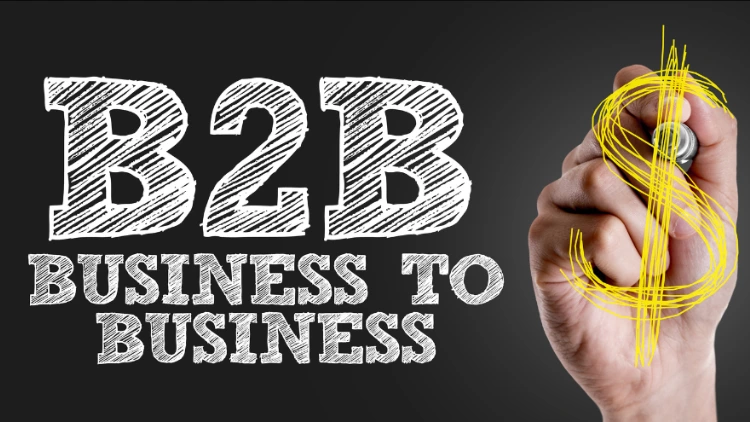Top B2B Sales Strategies for Business Growth

In the complex world of B2B sales, strategies that work in one industry or for one product may not necessarily apply to another. Each business-to-business (B2B) sales strategy must be tailored to specific markets, customer needs, and sales cycles. This article explores advanced B2B sales strategies with real-world examples, emphasizing how companies can adapt to various sales environments to drive success.
Jump To Section

Earn As You Learn
Earn 25% commission when your network purchase Uplyrn courses or subscribe to our annual membership. It’s the best thing ever. Next to learning,
of course.
Understanding B2B Sales Strategies
B2B sales strategies are methodologies employed to sell products or services from one business to another. Unlike business-to-consumer (B2C) sales, B2B sales are typically more complex, involving multiple stakeholders, longer sales cycles, and larger transactions. The right strategy can make a significant difference in closing deals, increasing revenue, and building long-term partnerships.
Traditional B2B Sales Examples: Meetings, Demos, and Negotiations
A classic B2B sales approach often involves direct interactions with potential clients, including multiple meetings, product demos, and rounds of negotiations. This strategy is particularly effective in industries where the product or service being sold is complex and requires a deep understanding from both the buyer and seller.
A software company selling an enterprise resource planning (ERP) system may engage with the client over several months. The process involves multiple meetings to understand the client’s needs, followed by detailed product demonstrations that showcase how the ERP system can address specific pain points. After a series of negotiations, which may involve pricing, customization, and implementation support, the deal is finally closed.
This B2B sales example highlights the importance of building strong relationships, offering tailored solutions, and being patient with the sales cycle. The key is to position the product as a solution to the client’s specific challenges, which requires in-depth knowledge and the ability to convey value effectively.
Modern B2B Sales: The Rise of B2B eCommerce
As digital transformation reshapes industries, B2B eCommerce has emerged as a powerful sales channel. More businesses are turning to online platforms to conduct transactions, enabling faster and more efficient sales processes. This shift is particularly evident in industries where buyers prefer self-service options or where products can be easily standardized.
A manufacturer of industrial components may list on an industrial eCommerce portal where buyers can browse products, compare prices, and place orders online. The platform could offer personalized recommendations based on previous purchases or industry trends, making the buying process more efficient. This approach reduces the need for direct sales interactions, speeds up transactions, and caters to the growing demand for digital purchasing options.
B2B eCommerce exemplifies how businesses can leverage technology to streamline their sales processes. It also shows the importance of adapting to changing buyer behaviors, especially as more B2B buyers seek the convenience and speed that online purchasing offers.
Ecosystem-Based B2B Sales: Building Long-Term Partnerships
Some of the most successful B2B sales strategies involve creating an ecosystem where multiple businesses collaborate to generate revenue. In these scenarios, a company’s sales are directly tied to the success of its partners, making it crucial to build and maintain strong relationships within the ecosystem.
A payment gateway provider integrates its services with various eCommerce platforms. Every time a transaction occurs on these platforms, the payment gateway earns a fee. The success of this B2B sales strategy depends on the payment gateway’s ability to sell its integration to different platforms and ensure seamless operation.
A loyalty program platform partners with hotels, airlines, and restaurants. The platform earns revenue each time a transaction involving loyalty points occurs within the hospitality ecosystem. In this scenario, the sales strategy focuses on selling the value of the loyalty program to multiple partners and ensuring that the program enhances customer retention and satisfaction.
These B2B sales examples illustrate how ecosystem-based sales strategies create a network of interdependent relationships, where the success of one partner drives the success of others. This approach is particularly effective in industries where collaboration and integration are key to delivering value to the end customer.
Implementing Effective B2B Sales Strategies
To implement successful B2B sales strategies, businesses must focus on the following:
- Understanding the Customer: Deep knowledge of the customer’s industry, challenges, and needs is critical. Sales teams should invest time in researching and understanding their prospects to offer solutions that truly resonate.
- Leveraging Technology: Whether through CRM systems, marketing automation, or eCommerce platforms, technology plays a crucial role in modern B2B sales strategies. Businesses must invest in the right tools to support their sales efforts and provide a seamless customer experience.
- Building Relationships: Long-term relationships are at the heart of B2B sales. Whether through traditional methods like meetings and demos or through ecosystem partnerships, businesses must prioritize trust and collaboration.
- Adapting to Change: The B2B sales landscape is constantly evolving. Companies that stay ahead of trends, such as the rise of eCommerce or the importance of ecosystems, will be better positioned to succeed.
B2B sales strategies are as diverse as the industries they serve. From traditional methods involving direct interactions to modern approaches like B2B eCommerce and ecosystem-based sales, businesses must choose the strategies that best fit their goals and market conditions. By understanding these strategies and adapting to changing environments, companies can drive sustained growth and build lasting partnerships.
Spend just a few hours on Suhasini Kirloskar’s eLearning course What is Content Strategy and Planning in B2B Marketing to supercharge your sales and marketing.


Leave your thoughts here...
All Comments
Reply